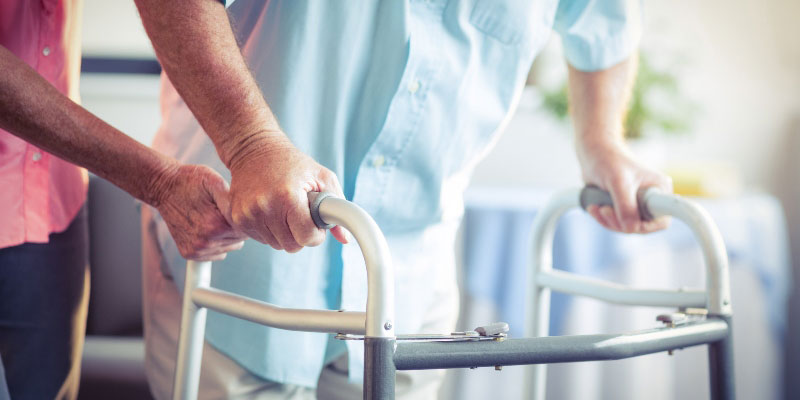The phrase “activities of daily living” is often thrown around within discussions about senior living options and different care services. But what exactly are ADLs, and how do they differ from IADLs—another common term used in senior care?
Wonder no more! This blog will talk about the differences between ADLs and IADLs and what activities are included under each term, along with an explanation of how these different care services become benefits for independence within assisted living communities.
What’s the Difference?
Both ADLs and IADLs refer to key life tasks that need to be accomplished daily. ADLs, or activities of daily living, are more basic tasks that are essential to independent living. IADLs, or instrumental activities of daily living, are more complex tasks that are still a necessary part of everyday life.
A good way to remember the difference between the two is to think of ADLs as tasks we learned as children—like eating and walking—and IADLs as things we learned as teenagers—like money management, driving, and housekeeping.
Activities of Daily Living
Care services for ADLs can range from simple assistance, such as check-ins and monitoring services, to full dependency on a nurse or caregiver to complete tasks. These care services are broken down into six specific categories:
1. Ambulating
This care service mostly involves helping with walking—both inside and outside. However, it can also include pushing a wheelchair, following alongside someone with a walker, or holding a senior’s arm while they walk.
2. Eating
The physical act of eating, including getting food into a person’s mouth and their ability to chew and swallow is another ADL that some seniors need assistance with.
3. Grooming
Grooming includes picking out clothes and getting dressed, brushing hair, cutting nails, brushing teeth, and taking care of personal appearance and hygiene.
4. Toileting
This care service includes all aspects of using the bathroom including getting to the toilet, using it, and properly cleaning oneself.
5. Bathing
Washing the face, taking a shower or bath, cleaning all parts of the body, and getting in and out of the tub are examples of ADLs that fall under the category of bathing.
6. Transferring
“Transferring” means moving the body from one position to another. For example, helping a senior with transferring can include getting them out of bed, sitting them up, moving them into a wheelchair, or helping to get them standing up.
Instrumental Activities of Daily Living
IADLs have a much more broad range of care service categories than ADLs. Rather than having exactly six different groups of activities, there isn’t a consistent number of IADLs. However, there are some common examples that all involve complex thinking and organizational skills that can be lost as people grow older.
Money Management
Managing one’s money includes things like paying bills, balancing checkbooks, going to the bank, depositing checks, and monitoring the flow of cash in and out of an account.
Transportation
Transportation needs include being able to drive oneself to different places, or arranging rides and organizing transport when you cannot drive alone.
Housekeeping & Maintenance
These tasks include keeping up with house cleaning, doing laundry, fixing minor maintenance needs like broken toilets or leaky faucets, and keeping things decluttered and tidy.
Communication
Knowing how to use the phone or computer to check messages, emails, and voicemails are all things that fall under a general category of “communication”, along with opening and replying to mail and remembering dates when visitors were coming to visit.
Medication Management
Knowing what medications to take and when, along with knowing when a prescription is running low, when it needs to be refilled, and how to refill it is all part of medication management.
Cooking & Meal Preparation
This can include planning out meals for the week, grocery shopping, storing groceries and checking expiration dates, and all the aspects of cooking a meal. It can also include picking the right food to meet dietary needs.
Daily Care in Assisted Living
Seniors begin to lose independence when they are no longer able to complete ADLs and IADLs on their own. In order to help community members maintain independence for as long as possible, assisted living doesn’t require all of these tasks to be taken care of at all times, like you would expect in a nursing home.
Assisted living communities will only give seniors assistance on ADLs and IADLs that residents need help with. Beyond these needed care services, community members are able to take care of their own daily tasks however they best see fit.
Because assisted living has the care services to provide for all of these needs as they arise, it’s easy for seniors to be able to age in place in assisted living communities knowing they will get the services they need, when they need them.






